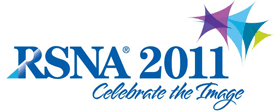
Abstract Archives of the RSNA, 2011
LL-CHS-SU4B
Diffusion Coefficients in Pulmonary Lesions: Evaluation with Intravoxel Incoherent Motion by Echo-planar MR Imaging
Scientific Informal (Poster) Presentations
Presented on November 27, 2011
Presented as part of LL-CHS-SU: Chest
Hisanobu Koyama MD, Presenter: Nothing to Disclose
Christian Hintze MD, Abstract Co-Author: Nothing to Disclose
Julien Dinkel MD, Abstract Co-Author: Nothing to Disclose
Michael Ulrich Puderbach MD, Abstract Co-Author: Nothing to Disclose
Monika Eichinger MD, Abstract Co-Author: Nothing to Disclose
Claus Peter Heussel MD, Abstract Co-Author: Review Board, Gilead Sciences, Inc
Review Board, Merck & Co, Inc
Review Board, Astellas Group
Review Board,Novartis AG
Review Board, Boehringer Ingelheim GmbH
Speakers Bureau, Gilead Sciences, Inc
Speakers Bureau, Schering-Plough Corporation
Speakers Bureau, AstraZeneca PLC
Speakers Bureau, Merck & Co, Inc
Speakers Bureau, Pfizer Inc
Stockholder, GlaxoSmithKline plc
Stockholder, STADA Arzneimittel AG
Research grant, Novartis AG
Research, Schering-Plough Corporation
Research, Boehringer Ingelheim GmbH
Research, F. Hoffmann-La Roche
Research, Astellas Group
Research, Novartis AG
Juergen Biederer MD, Abstract Co-Author: Nothing to Disclose
Hans-Ulrich Kauczor MD, Abstract Co-Author: Research grant, Siemens AG
Research grant, Boehringer Ingelheim GmbH
Research Consultant, General Electric Company
Bram Stieltjes MD, Abstract Co-Author: Nothing to Disclose
To investigate how perfusion contributes to the apparent diffusion coefficients values (ADC) of abnormal lung lesions and to assess the intrinsic relationship among quantitative parameters of diffusion weighted imaging such as ADCs, true diffusion coefficient (D) and perfusion fraction (PF).
A positive vote of the local ethics committee was obtained. Forty-two patients (mean age, 61.2 years) with 47 pulmonary lesions (mean diameter, 64.5 mm) were enrolled in this study. All MR examinations were performed on a clinical 1.5 T scanner. DWI was performed with echo-planar imaging and multiple b factors (b = 0, 50, 100, 150, 200, 300, 400 and 600 s/mm2) during repeated breath-hold imaging in expiration. A free-hand region of interest was drawn on the ADC-map to encompass the lesion, and the values of ADC, D, and PF were recorded. To determine the difference between ADCs and D, ADCs were compared with D by using paired Student´s t test. To determine the relationship between these quantitative DWI parameters, the Pearson's correlation coefficient was calculated. Finally, these parameters were compared between benign (n = 3) and malignant lesions (n =44), and between small cell lung cancer (SCLC) (n = 8) and non SCLC (NSCLC) (n =36).
The mean ADC and D were 1.51 ± 0.30 × 10-3 mm2/sec and 1.40 ± 0.31 × 10-3 mm2/sec, respectively. The ADCs were significantly higher than Ds (p < 0.001). The ADCs were significantly correlated with PF (r = 0.42, p < 0.01) and D (r = 0.93, p < 0.001), however there was no significant difference between PF and D (p > 0.05). All parameters showed no significant difference between benign and malignant pulmonary lesions, and no significant difference between SCLC and NSCLC.
Perfusion influences ADCs, and PF and D are independent parameters in chest DWI.
Perfusion also influences to ADC values in chest DWI, therefore it is also important to know how perfusion contributes to the ADCs in lung abnormal lesions when using ADC values.Perfusion influences A
Koyama, H,
Hintze, C,
Dinkel, J,
Puderbach, M,
Eichinger, M,
Heussel, C,
Biederer, J,
Kauczor, H,
Stieltjes, B,
Diffusion Coefficients in Pulmonary Lesions: Evaluation with Intravoxel Incoherent Motion by Echo-planar MR Imaging. Radiological Society of North America 2011 Scientific Assembly and Annual Meeting, November 26 - December 2, 2011 ,Chicago IL.
http://archive.rsna.org/2011/11003163.html

